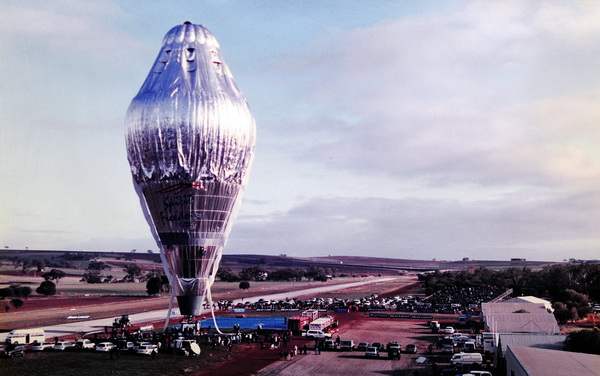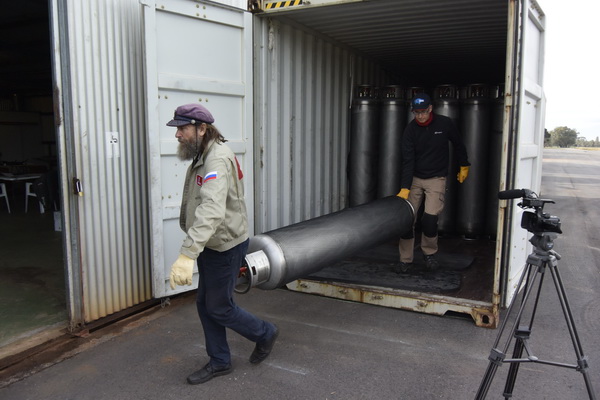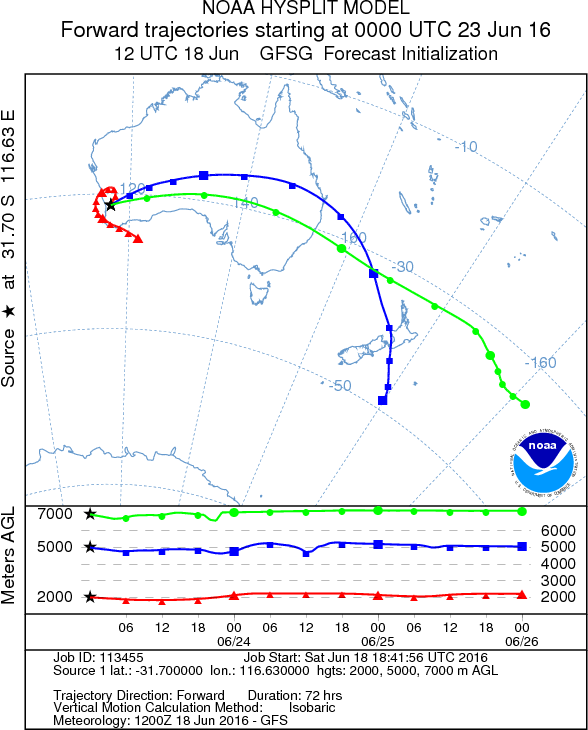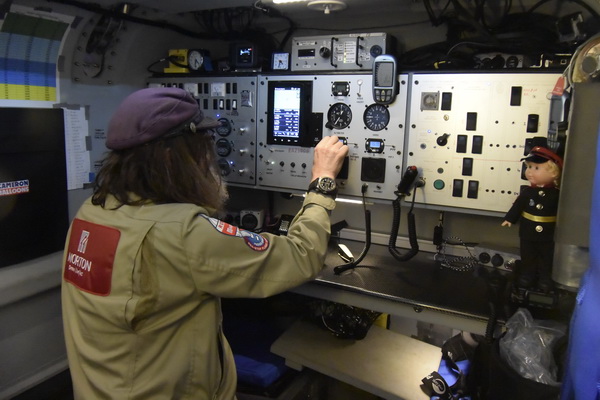Waiting for the weather window
The 19th July 2002 is a special date for the international ballooning community: on that day in Northam, Western Australia American pilot Steve Fossett took off on his sixth attempt at completing his solo nonstop fly around the world.

Steve Fossett’s balloon on the launch day, 19th of July 2002. Picture curtesy of Shire of Northam.
Today is 19th of June 2016. Our Russian-English-Australian team, based in Northam, 100 km from Indian Ocean, is waiting for favourable weather conditions. All our gear has finally arrived at the launch site from all over the world.

Meteorologists have started monitoring the weather for the take-off of the balloon ‘Morton’.
Almost a full day of calm dry weather is needed to assemble the balloon and fill it with helium. In the morning, the crew will cover the field between taxiways with a special material that will protect the delicate envelop fabric from any damage. Then we will unload the containers: the external envelope that is made of three parts and the internal, gas envelope. The local AFL team will be helping us with this task. The objective is to put everything together, lay down various cables inside and prepare the balloon to be filled with helium.

This preparation work will utilize all daylight hours. We will have some rest in the evening and start filling the envelope at about midnight; 10,000 cubic meters of helium will be pumped into the gas cell of the balloon. After the balloon stands upright, all the systems will be checked again and the pilot will enter the gondola. The next steps will be testing the radio and notifying the Control Tower that we are ready for the launch. The dawn shall see the balloon “Morton” taking off. That is the plan; altogether we are looking at 24 hours of work with short breaks.
The weather:

As can be seen from the diagram above, established jet streams are expected at the altitude of 7,000 m from 23th of June onwards (green line). However, because of its maximum load (10 tonnes) during the first days of flight, the Roziere balloon ‘Morton’ won’t be able to reach this altitude. At lower altitude the wind streams are travelling in the wrong direction for our flight plan, hence, are also unsuitable (blue and red lines).

What we need are the jet streams to descend to approx. 5,000 m and at least 12 hours of calm dry weather on the ground. At present we continue monitoring the weather while the pilot is fine-tuning the equipment.
Translated by Galina